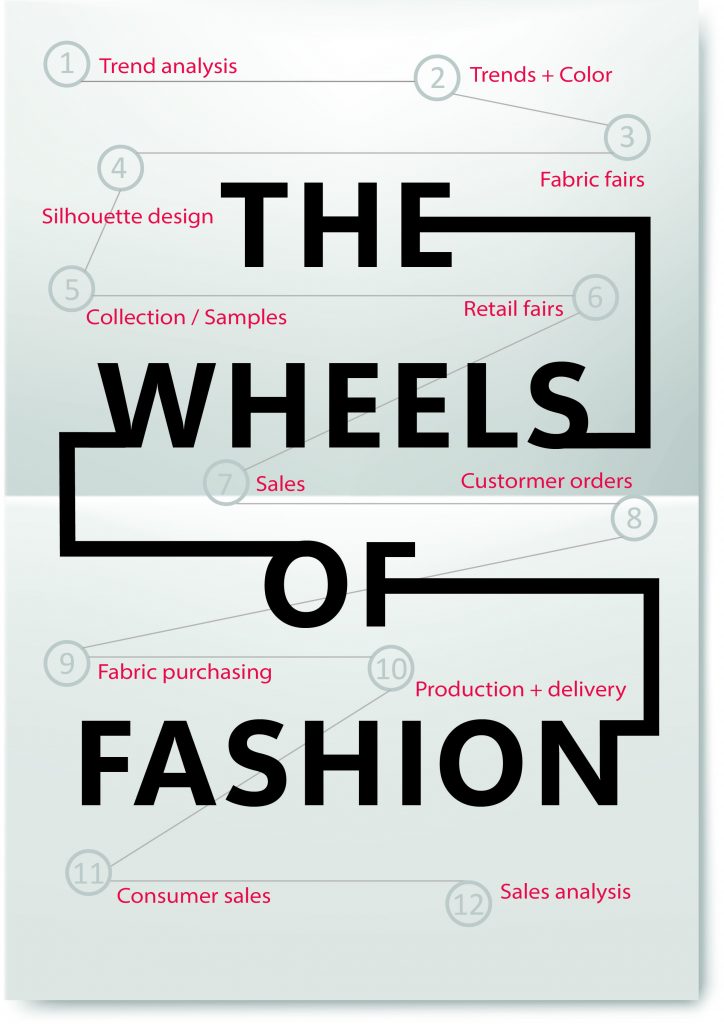The fashion wheel describes the full cycle a fashion collection goes through, from conception to reaching the hands of the consumer. This detailed process involves not only creativity but also a series of strategic steps to ensure the collection becomes a reality and reaches the market successfully. Below, you can find the main phases of this cycle:

Curious about the details of this cycle? Keep reading to see how fashion moves from creation to consumer!
- Trend Analysis: The process begins with a thorough trend analysis. Brands and designers study cultural, social, technological, and economic influences to identify what will be in fashion in the future. This analysis typically happens 12 to 18 months before the products hit the stores
- Trends + Color: Once key trends are identified, the color palettes and materials for the season are selected. Colors and textures are essential to define the visual identity of the collection, and this step is done well in advance to ensure all elements are aligned.
- Fabric Fairs: Brands attend fabric and material fairs to find the right products that align with the vision for the collection. These fairs, held in cities like Paris and Milan, are where designers ensure they have the most innovative and suitable materials for their creations.
- Silhouette Design: Designers begin shaping the collection by creating silhouettes. Based on the selected trends and materials, initial sketches are made, experimenting with shapes and cuts that define the overall style of the season.
- Collection / Samples: The first samples or prototypes of the garments are developed. These initial pieces serve as a test of the design, allowing designers to make adjustments before mass-producing the collection
- Retail Fairs: At this stage, collections are presented at trade fairs to buyers from stores and large distributors. These buyers decide which pieces of the collection they will carry in their stores, based on anticipated demand and market preferences.
- Sales: Sales take place at this point, where buyers place orders for the collection for their stores. This stage is crucial to ensure the merchandise is in stores at the right time and in the correct quantities.
- Customer Orders: Stores start selling to eager consumers awaiting new releases. Sales reveal public interest in the collections and can shape future production decisions.
- Fabric Purchasing: With customer orders in hand, brands purchase the necessary fabrics and materials to complete the production of the collection. This step ensures everything is ready for manufacturing
- Production + Delivery: Here is where mass production begins. The garments are manufactured in factories and shipped to stores, ready to be distributed to consumers. This stage ensures quality control and timely delivery to meet deadlines.
- Consumer Sales: The garments finally hit the shelves of physical and online stores. Consumers can purchase the items directly, and the sales reflect the success of the collection.
- Sales Analysis: Once sales are underway, an analysis is conducted to evaluate the performance of the collection. Sales trends, consumer preferences, and the most successful products are studied to adjust future collections.
This cycle is essential to understanding how fashion is created and evolves, ensuring that collections are not only innovative but also commercially viable and aligned with consumer demand.
